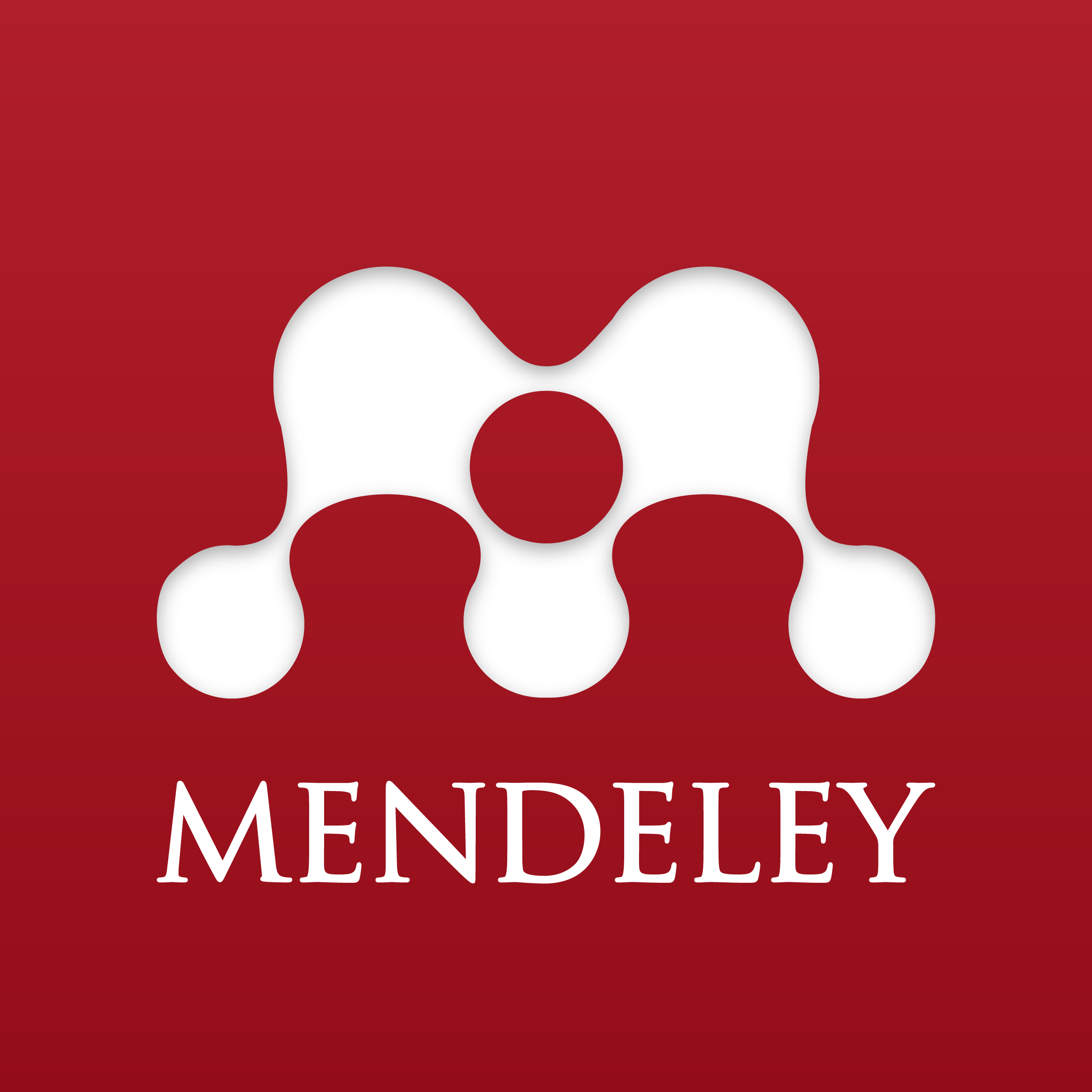Meningkatkan Place Attachment: Mengungkap Pengaruh Urban Park Value, Flow Experience, Eudaimonic Satisfaction, dan Hedonic Satisfaction
Abstract
The aim of this research is to examine the influence of urban park value and flow experience on place attachment. This quantitative research uses a survey method with a total of 100 respondents. The data analysis technique is through multiple linear regression using SPSS version 25 and the online Sobel test. The results show that physical attributes have an indirect positive effect on place attachment through eudaimonic satisfaction; scenery has a direct positive effect on place attachment; and, flow experience has no effect on place attachment. The research results are useful for managers of the objects being assessed and similar green open space industries regarding designing relevant strategies to improve the quality of place attachments.
References
Agustin, Z., Azzahro, I. A., Fachrudin, M. A., & Sari, L. B. (2023). Peranan taman kota dalam mewujudkan kota berkelanjutan di perkotaan Tulungagung. DEWANTARA: Jurnal Pendidikan Sosial Humaniora, 2(2), 51–62. https://doi.org/doi.org/10.30640/dewantara.v2i2.1016.
Armbrecht, J., & Andersson, T. D. (2019). The event experience, hedonic and eudaimonic satisfaction and subjective well-being among sport event participants. Journal of Policy Research in Tourism, Leisure and Events, 12(3), 457–477. https://doi.org/10.1080/19407963.2019.1695346.
Basu, M., Hashimoto, S., & Dasgupta, R. (2019). The mediating role of place attachment between nature connectedness and human well‑being: Perspectives from Japan. Sustainability Science, 0123456789. https://doi.org/10.1007/s11625-019-00765-x.
Bazrafshan, M., Spielhofer, R., Wissen Hayek, U., Kienast, F., & Grêt-Regamey, A. (2023). Greater place attachment to urban parks enhances relaxation: Examining affective and cognitive responses of locals and bi-cultural migrants to virtual park visits. Landscape and Urban Planning, 232(April), 104650. https://doi.org/10.1016/j.landurbplan.2022.104650.
Bonaiuto, M., Mao, Y., Roberts, S., Psalti, A., & Ariccio, S. (2016). Optimal experience and personal growth: Flow and the consolidation of place identity. Original Research, 7(November), 1–12. https://doi.org/10.3389/fpsyg.2016.01654.
Badan Pusat Statistik. (2022). Indeks kebahagiaan menurut provinsi, 2014-2021. Edisi 11 Januari. https://www.bps.go.id/id/statistics-table/2/NjAxIzI=/indeks-kebahagiaan-menurut-provinsi.html.
Badan Pusat Statistik Kota Bandung. (2021). Potensi ruang terbuka hijau (RTH) di Kota Bandung, 2020. Edisi 25 Maret. https://bandungkota.bps.go.id/statictable/2021/03/25/1459/potensi-ruang-terbuka-hijau-rth-di-kota-bandung-2020-.html.
der Kinderen, S., Valk, A., Khapova, S. N., & Tims, M. (2020). Facilitating eudaimonic well-being in mental health care organizations: The role of servant leadership and workplace civility climate. International Journal of Environmental Research and Public Health, 17(4), 1–17. https://doi.org/10.3390/ijerph17041173.
Elsaid, H., Fathallah, M. A., Montaser, N. M., & Management, H. (2022). Investigating the impacts of selfie tourism on place attachment in Marsa Alam City. International Journal of Tourism, Archaeology, and Hospitality (ITJAH), 2(3), 88–105. https://doi.org/10.21608/ijtah.2023.185239.1030.
Gagliardi, C., Pillemer, K., Gambella, E., Piccinini, F., & Fabbietti, P. (2020). Benefits for older people engaged in environmental volunteering and socializing activities in city parks: Preliminary results of a program in Italy. International Journal of Environmental Research and Public Health, 17(11), 1–12. https://doi.org/10.3390/ijerph17113772.
Ghozali, I. (2011). Aplikasi analisis multivariate dengan program SPSS. Badan Penerbit Universitas Diponegoro.
Houlden, V., Porto de Albuquerque, J., Weich, S., & Jarvis, S. (2019). Does nature make us happier? A spatial error model of greenspace types and mental well-being. Environment and Planning B: Urban Analytics and City Science, 48(4), 655–670. https://doi.org/10.1177/2399808319887395.
Hu, J., Ying, J., Zhang, Y., Shen, Y., & Wu, X. (2023). From landscapes to bonds: Exploring the influencing mechanism of community parks on social integration. Sustainability (Switzerland), 15(10), 1-14. https://doi.org/10.3390/su15108065.
Kaźmierczak, A. (2013). The contribution of local parks to neighbourhood social ties. Landscape and Urban Planning, 109(1), 31–44. https://doi.org/10.1016/j.landurbplan.2012.05.007.
Kim, D., & Jin, J. (2018). Does happiness data say urban parks are worth it? Landscape and Urban Planning, 178 (October), 1–11. https://doi.org/10.1016/j.landurbplan.2018.05.010.
Lee, W., & Jeong, C. (2021). Distinctive roles of tourist eudaimonic and hedonic experiences on satisfaction and place attachment: Combined use of SEM and necessary condition analysis. Journal of Hospitality and Tourism Management, 47 (August), 58–71. https://doi.org/10.1016/j.jhtm.2021.02.012.
Li, X., Zhang, X., & Jia, T. (2023). Humanization of nature: Testing the influences of urban park characteristics and psychological factors on collegers’ perceived restoration. Urban Forestry and Urban Greening, 79 (May), 1-14. https://doi.org/10.1016/j.ufug.2022.127806.
Liu, D. Y., Cheng, C. C., Huang, C. F., & Mao, T. Y. (2019). Effects of visitors’ novelty seeking and flow experiences on place attachments in Taiwan’s night markets. ACM International Conference Proceeding Series, 74–78. https://doi.org/10.1145/3355966.3355984.
Liu, R., & Xiao, J. (2021). Factors affecting users’ satisfaction with urban parks through online comments data: Evidence from Shenzhen, China. International Journal of Environmental Research and Public Health, 18(1), 1–22. https://doi.org/10.3390/ijerph18010253.
Magalhães, E., & Calheiros, M. M. (2020). Why place matters in residential care: The mediating role of place attachment in the relation between adolescents’ rights and psychological well-being. Child Indicators Research, 13(5), 1717–1737. https://doi.org/10.1007/s12187-019-09716-5.
Morgan, P. (2010). Towards a developmental theory of place attachment. Journal of Environmental Psychology, 30(1), 11–22. https://doi.org/10.1016/j.jenvp.2009.07.001.
Moulay, A., Ujang, N., Maulan, S., & Ismail, S. (2017). Understanding the process of parks’ attachment: Interrelation between place attachment, behavioural tendencies, and the use of public place. City, Culture and Society, November, 28–36. https://doi.org/10.1016/j.ccs.2017.12.002.
Mouratidis, K., & Yiannakou, A. (2022). Land use policy what makes cities livable ? Determinants of neighborhood satisfaction and neighborhood happiness in different contexts. Land Use Policy, 112(November 2021), 105855. https://doi.org/10.1016/j.landusepol.2021.105855.
Moztarzadeh, H., & Mohajer, E. (2020). Effect of green space on resident`s place attachment in residential spaces (Case study: Villa and apartment dwellers in Shiraz). International Journal of Architecture and Urban Development, 10(2), 13–24. https://doi.org/10.30495/IJAUD.2020.15846.
Nath, T. K., Zhe Han, S. S., & Lechner, A. M. (2018). Urban green space and well-being in Kuala Lumpur, Malaysia. Urban Forestry and Urban Greening, 36, 34–41. https://doi.org/10.1016/j.ufug.2018.09.013.
Park, S., & Ahn, D. (2022). Seeking pleasure or meaning? The different impacts of hedonic and eudaimonic tourism happiness on tourists’ life satisfaction. International Journal of Environmental Research and Public Health, 19(3), 1–15. https://doi.org/10.3390/ijerph19031162.
Preacher, K. J., & Hayes, A. F. (2004). SPSS and SAS procedures for estimating indirect effects in simple mediation models. Behavior Research Methods, Instruments, & Computers, 36(4), 717–731. https://doi.org/10.1002/jcp.28952.
Qin, B., Zhu, W., Wang, J., & Peng, Y. (2021). Understanding the relationship between neighbourhood green space and mental well-being: A case study of Beijing, China. Cities, 109(November), 103039. https://doi.org/10.1016/j.cities.2020.103039.
Rahim, N. B. (2017). Leveraging the psychological well-being among Malaysian engineers: The role of protean career orientation and career strategy implementation. Jurnal Pengurusan, 49(July), 53–65. https://doi.org/10.17576/pengurusan-2017-49-05.
Rahmani, K., Gnoth, J., & Mather, D. (2018). Hedonic and eudaimonic well-being: A psycholinguistic view. Tourism Management, 69(June), 155–166. https://doi.org/10.1016/j.tourman.2018.06.008.
Saint-Onge, K., Coulombe, S., Philibert, M., Wiesztort, L., & Houle, J. (2022). How urban parks nurture eudaimonic and hedonic well-being: An explorative large scale qualitative study in Québec, Canada. Wellbeing, Space and Society, 3(July), 100095. https://doi.org/10.1016/j.wss.2022.100095.
Shams, K., & Kadow, A. (2021). Leisure-time and subjective well-being among park visitors in urban Pakistan: The mediating role of health satisfaction. SN Social Sciences, 1(6), 1–20. https://doi.org/10.1007/s43545-021-00168-9.
Suciyani, W. O., Oktavia, H. C., & Ridarini, A. (2023). Analisis kualitas aset taman kota berdasarkan neighbourhood green space tool di Taman Abdi Negara Kota Bandung. Jurnal Lanskap Indonesia, 15(1), 8–17. https://doi.org/10.29244/jli.v15i1.40990.
Sugiyono. (2017). Metode penelitian kuantitatif, kualitatif, dan R&D. CV. Alfabeta.
Sun, J., & Guo, Y. (2022). Influence of tourists’ well-being in the post-COVID-19 era: Moderating effect of physical distancing. Tourism Management Perspectives, 44(1), 101029. https://doi.org/10.1016/j.tmp.2022.101029.
Tao, H., Zhou, Q., Tian, D., & Zhu, L. (2022). The effect of leisure involvement on place attachment: Flow experience as mediating role. Land, 11(2), 1–21. https://doi.org/10.3390/land11020151.
Vada, S., Prentice, C., & Hsiao, A. (2019). The influence of tourism experience and well-being on place attachment. Journal of Retailing and Consumer Services, 47(December), 322–330. https://doi.org/10.1016/j.jretconser.2018.12.007.
Wardani, C. T. K., & Ernawadi, Y. (2023). Hedonic satisfaction sebagai konsekuensi dari physical attributes dan scenery taman kota. Jurnal Ekombis Review, 11(2), 1305–1316. https://doi.org/10.37676/ekombis.v11i12.
Waterman, A. S., Schwartz, S. J., & Conti, R. (2008). The implications of two conceptions of happiness (hedonic enjoyment and eudaimonia) for the understanding of intrinsic motivation. Journal of Happiness Studies, 9(1), 41–79. https://doi.org/10.1007/s10902-006-9020-7.
Wicaksono, A. B., & Sasmito, A. (2022). Place attachment pada Gedung Juang 45 Jati sebagai bangunan bersejarah dan ruang publik. SARGA: Journal of Architecture and Urbanism, 16(1), 14–21. https://doi.org/10.56444/sarga.
Xie, M., Mao, Y., & Yang, R. (2022). Flow experience and city identity in the restorative environment: A conceptual model and nature-based intervention. Frontiers in Public Health, 10(3), 1-15. https://doi.org/10.3389/fpubh.2022.1011890.
Zhang, R. (2023). Integrating ergonomics data and emotional scale to analyze people’s emotional attachment to different landscape features in the Wudaokou Urban Park. Frontiers of Architectural Research, 12(1), 175–187. https://doi.org/10.1016/j.foar.2022.06.007.
Copyright (c) 2024 Cevi Tri Kusumah Wardani, Mochamad Vrans Romi

This work is licensed under a Creative Commons Attribution-ShareAlike 4.0 International License.

















